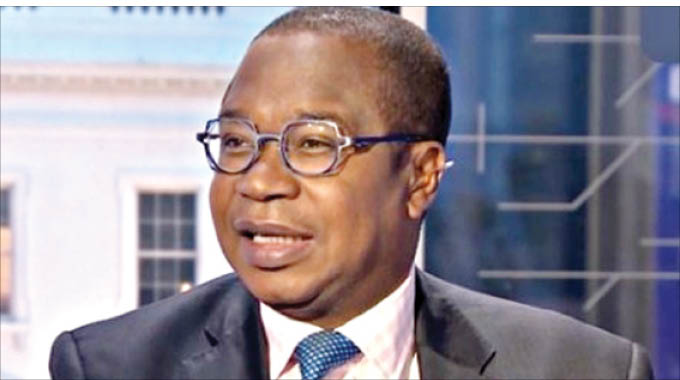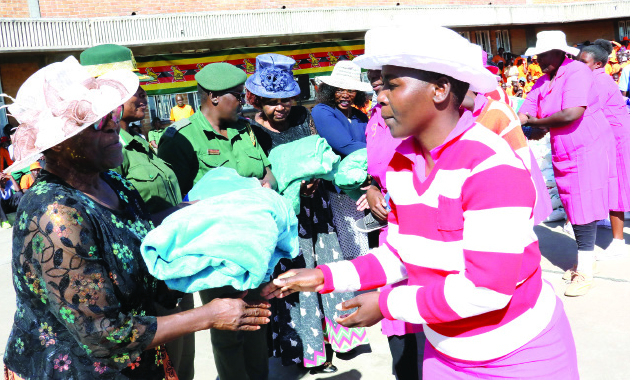Zim economy to grow 7,4 percent next year

Prosper Ndlovu, Business Editor
THE country’s economy is expected to be out of the woods next year with a positive growth projection of 7.4 percent from minus 4.5 percent this year, riding on gains recorded under the Government’s short-term Transitional Stabilisation Programme (TSP).
The anticipated growth would enable the economy to sustain higher wages, steer aggregate demand as well as tame inflationary pressures, which have recently eroded consumer purchasing power.
Finance and Economic Development Minister, Professor Mthuli Ncube, said this in his 2021 Pre-Budget Strategy Paper themed: “Building Resilience and Economic Recovery Post Covid-19”.
The strategy document also outlines suggested priorities for next year’s national budget, which is guided by the National Development Strategy (NDS I: 2021-25), to be launched this month.
NDS I is a successor to the TSP, which comes to an end in December 2020. It will consolidate the achievements of TSP as the country moves towards attaining a middle-income status economy by 2030.
Prof Ncube said the projected normal to above normal rain season, improved investment conditions and well-planned strategies and programmes under the NDS 1 blue-print, form a solid basis for the desired turnaround. Although the last two years have been tough for the domestic economy because of climatic, macro-economic, and the current Covid-19 shocks as well as the impact of sanctions, Zimbabwe has exhibited resilience. This is evidenced by the successes on the economic reforms under TSP. Since the gradual re-opening of the economy from Covid-19 lockdown restrictions during the beginning of the second half of the year, Prof Ncube said economic activity was picking up and Zimbabwe was poised for robust recovery, alongside other global economies.
“In 2021, the economy is predicted to recover from a projected contraction of – 4.5 percent in 2020 to a growth of 7.4 percent, driven by consumption (2.6 percent) and investment (5.8 percent) improvements,” said Prof Ncube.
“The recovery in consumption is mainly anchored on expected stabilisation of inflation through ongoing policy interventions, which should aid restoration of purchasing power of consumers.
“Employers including the Government will continue to review wages and salaries in line with inflation developments and budget capacity to restore eroded incomes as the economy recovers.”
The prospects for 2021 and beyond are largely based on the broad assumptions of recovery from Covid-19 pandemic, resumption of global economic activity, good agricultural season, enhanced revenue collection, materialisation of mining investment projects, fiscal stability, domestication of value chains, control of wasteful expenditure, sustainability of the auction system and tourism and trade resumption.
The minister expects public investments to contribute 5,1 percent to the Gross Domestic Product (GDP) growth next year with the Government pushing completion of projects that stalled this year. From the production side, he said all sectors of the economy were expected to register positive growth, with the agriculture and mining sectors expected to record the highest growth rates of about 11 percent each, tourism (6.8 percent) and energy (10 percent) among the major sectors.
The minister said a good farming season should result in reduced demand for foreign currency, further supporting exchange rate stability. As such, the 2021 National Budget would be a bridge of the TSP and the NDS, which should consolidate gains achieved.
Accordingly, Prof Ncube said inflation is projected to slow down significantly, with average annual inflation projected at 134 percent during the year 2020.
The slowdown in inflation will be attributed to deepening of the foreign currency auction market, which is expected to sustain exchange rate stability. The minister said the Reserve Bank of Zimbabwe would continue to curtail growth in money supply, which is one of the major drivers of inflation.
“Improvement in economic activity will also have positive impact on public finances with revenues expected to increase to about 13.4 percent of GDP.
“With expenditures projected at 14.7 percent, a budget deficit of around 1.23 percent is anticipated, consistent with NDS 1 targets and Sadc recommended thresholds,” said Prof Ncube.
“The current account balance is also projected at below 3.1 percent of GDP, reflecting improvements in exports and management on non-essential imports.”
Under TSP (2018-2020), the Government scored milestones in macro-stabilisation, which positions the economy to focus more on growth initiatives. Commendable strides were also on fiscal consolidation, resuscitation of the monetary policy, investment mobilisation and stimulus measures to productive sectors as well as progress on structural and governance reforms. Endeavours were also undertaken in pursuing re-engagement with the international community, facilitation of investment, and infrastructure development, which all constitute necessary and adequate conditions to launch and support sustainable growth through the NDS 1.
Zimbabwe is, however, not blind to potential risks to the economic and fiscal outlook and is putting in place mitigatory measures, said the minister.
The risks include the continued impact of Covid-19, which has crippled global value chains with no clear end in sight.
Should the global economy contract further, this may pose serious implications on the domestic economy through low international commodity prices, low investment, exports and remittances, as well as tourism opportunities.











Comments